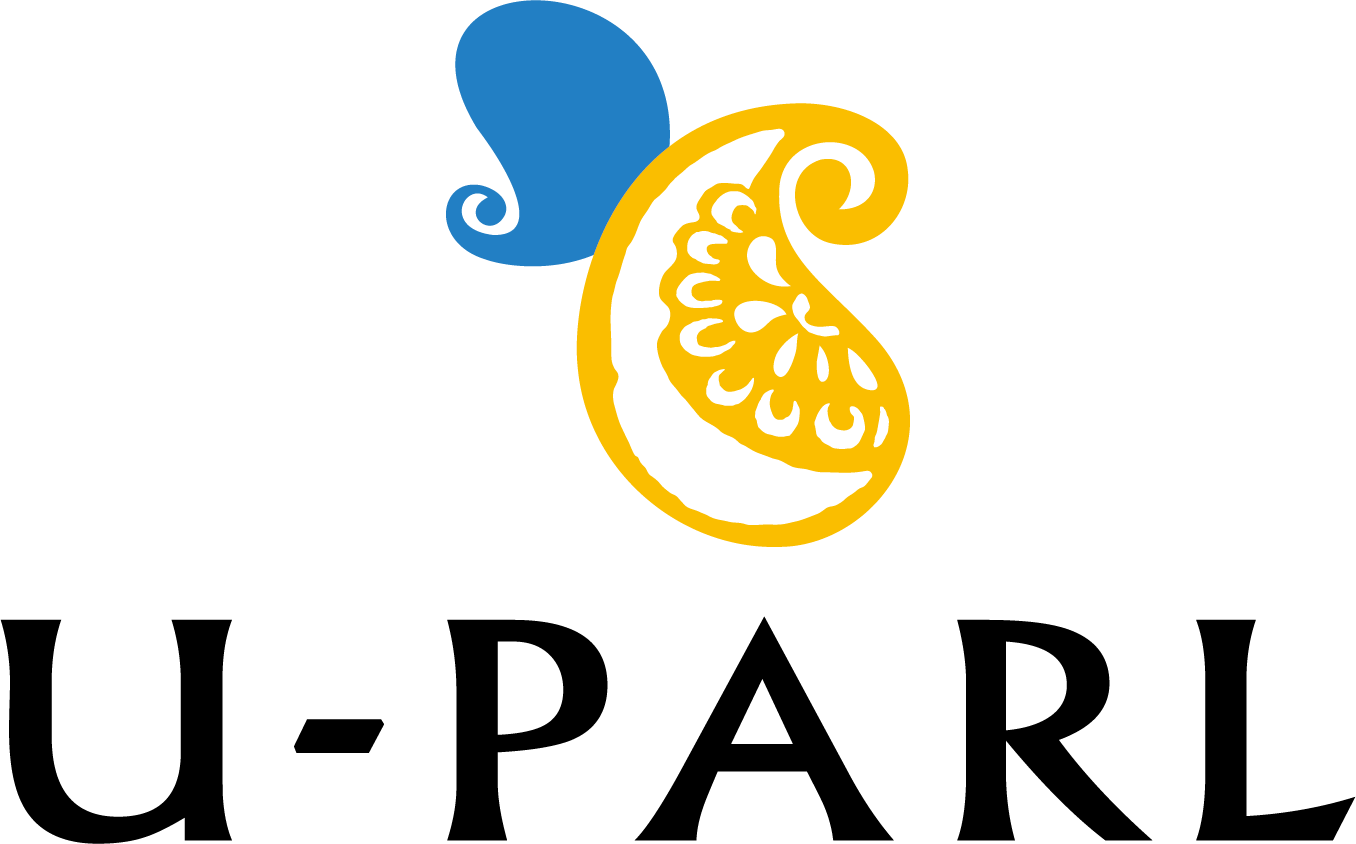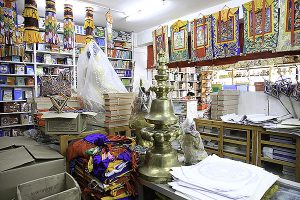
Hiroshi TAKAHASHI
Researcher, Japan Institute for Bhutan Studies,
Writer/Editor for Chikyū no arukikata Globe-trotter Travel Guidebook: Bhutan (in Japanese)
*Hiroshi TAKAHASHI is a writer with profound knowledge and many years of experience covering Bhutan. He has contributed to the cataloguing of the Dzongkha language materials from among the “Literacy Education Materials Donated by ACCU.” Here, he explains for us the societal and educational circumstances surrounding Dzongkha, English, and minority regional languages, and he shares the knowledge he gained from surveying the materials. We are very grateful for his contribution of this commentary. An overview of the literacy education materials donated by ACCU can be seen here.
Dzongkha as the Official Language Established for a Multilingual Nation
Even leaving aside the Nepali and Tibetan languages brought in by immigrants since the 20th century, in Bhutan there are at least ten or more languages that are spoken. After the founding of the nation in the 17th century, the regional language which was spoken in Punakha—the capital at that time—spread throughout almost the whole western region, which was the center of government and culture. On the other hand, in the central and eastern regions where the unification of the state proceeded more slowly, many regional languages remain, and it is not uncommon for one to encounter villages with people that speak several different languages grouped together in one valley. Again, in the eastern region, the Tshanglakha (/Sharchokpa) language is the common language of a multilingual society in a large area also encompassing territory of neighboring India, and the number of native speakers is thought to outnumber that of the national language of Dzongkha. Lhotshamkha, which is a regional dialect of the Nepali language has also spread as a common language centering around the southern region, and there is a convincing hypothesis that it has the largest number of speakers. That is to say, Bhutan is both historically and currently a country where you cannot say, “If you are from Bhutan, you surely speak Bhutanese.”
Bhutan, up until the establishment of the monarchy at the start of the 20th century, had the unity of church and state as its national polity with Tulku (lit. “living Buddhas”) of the Kagyu school of Tibetan esoteric Buddhism acting as sovereigns, and the fortress temples known as “dzong” that were placed in each region became branch offices of the central government. As it was the official language (“kha”) used in the dzong, the regional language of the western region later came to be known as “Dzongkha.” For this reason, in order to obtain a position as a civil servant or to educate oneself academically as a priest, learning Dzongkha became an indispensable part of one’s education, even for those from regions where it was not the mother tongue. To put it in other words, while Dzongkha was the language of “the superiors (government)” and had no direct connection with the daily lives of normal people, especially in the central and eastern regions, it was also a language that symbolized the unifying forces of state creation for a multilingual society as a whole.
Position as the “National Language” of the Modern State and Education
Also, against this sort of historical background, Bhutan took on Dzongkha as its national language in the process of organizing systems as a modern state in the middle of the 20th century. However, at this point, too, one can certainly not say that the number of speakers was overwhelming, and even in the western region where Dzongkha was the native language, the ability to read and write was limited to bureaucrats, the priesthood, and the like. Moreover, because classical Tibetan literary language was used in classical works, official documents, and the biographies of Bhutanese monks, Dzongkha was mainly used as a spoken language, and it is rare that one will find classical literary studies or historical materials written in Dzongkha.
Dzongkha, which saw in the new era as the national language in the 20th century, needed to deal with the issues involved in unifying the written and spoken forms of the language and needed to invent new words for things from fields like science and technology and modern thought. In this respect, the situation was similar to that of the Japanese language in the Meiji period (1868–1912). However, because English was chosen as the teaching language for Bhutan’s school education, circumstances after that changed greatly. In public school education, which began in the 1960s, all subjects other than Dzongkha language studies are taught in English, and this also includes the subjects of history and written composition. Despite Dzongkha being a compulsory subject, the time allotted to it is limited and it has a position somewhat similar to classics studies or penmanship in the school system in Japan. At present, the percentage of attendance for elementary education has reached 95 percent, and in this last half century, the literacy rate has shot up dramatically. However, the central focus of this literacy increase is people with no impediments when it comes to reading and writing in English but who have no confidence in reading or writing Dzongkha.
Literacy and Language Required in Everyday Life
This superiority of English literacy is not only limited to the level of education and training. For example, in order to obtain white collar work, while English reading and writing ability is a decisive factor, it is normal that Dzongkha is not even evaluated. In everyday life, too, from personal things like memos and letters, to things like warning labels and instruction manuals, it is English that is used. Even for foreigners, being unable to speak Dzongkha barely affects their daily lives at all. English is also the primary language for procedures at public offices and the like. Thus, when it comes to literacy ability in modern social life in Bhutan’s case, this means, in reality, English literacy. To put it in other words, people that cannot read English but are able to read Dzongkha are at a handicap in society.
Among the literacy education materials (in Dzongkha) that were catalogued this time, there were ones that promote the significance of literacy education through stories like, “I mistakenly swallowed farming chemicals because I couldn’t read the words on the label of the container”; “Even if I go to the hospital, I won’t be able to read the prescription”; and, “(as a result of literacy education) I was able to warn the cars after me with a sign about the landslide on the road.” However, English is the primary language for the writing on product packaging in Bhutan. There are surely many doctors that are not able to write the name of illnesses in correct Dzongkha. In the case of warning others of danger, it is more realistic to make up a sign with the English letters “STOP” written on it; and, in reality in those sorts of cases it is English that is used. In conversations, the national language of Dzongkha is normally used, but in the case of written communication English is the norm, meaning that an irregular two-level structure characteristic of a multilingual society has become normalized.
The Social Implications for Education through Dzongkha
Working out what sort of language to use in conducting literacy education given these circumstances engenders difficult problems. What is required by society in reality is reading and writing ability in English, but having said that, for the pupils of literacy education—as is the case for all elementary school students in Bhutan—simply telling them they must start by learning English would not be realistic. Actually, the literacy education materials received this time were all in Dzongkha. However, as I mentioned earlier, the only place where Dzongkha is used in formal education is in the limited settings of Dzongkha language education itself or in studies in traditional culture. Knowledge other than this is all imparted via English. To put it another way, the use of Dzongkha language textbooks in real world educational environments is only seen on the ground in a non-formal education setting.
Because society as a whole is premised on this sort of educational system, it is the status quo in Bhutan that when one seeks to obtain knowledge through a written medium, not only at school but also in everyday situations, it is easier to search for English language materials. Probably, the only exception to this are things related to Buddhism. Consequently, one can understand why manuals and guidelines related to agriculture, woodworking, and dying and weaving were included among the materials. It is likely that these were not regular Dzongkha practical pieces that were adapted for use in literacy education, but rather that they were pieces that had originally been in English and had been translated into Dzongkha. From an extreme viewpoint, education and training via Dzongkha itself is the exception in Bhutan—and is for all intents and purposes “irregular.” For this reason, learning support within the context of non-formal education is necessary for those that are literate in Dzongkha but illiterate in English. Again, if there is no such official support, the opportunities for education and the transmission of knowledge through Dzongkha, which has insufficient market scale, can only shrink.
Basic Language Education Policy and Literacy Education
However, at the same time, this means it is grassroots non-formal education that is having to tackle the issue of educating people via their own national language—an issue that the formal school system has not been able to solve for a half century and for which it has no viable plan for the future. What’s more, with the sort of language circumstances I noted at the beginning of this commentary, those participants in non-formal education are not necessarily speakers of Dzongkha. As an overall trend in recent years, it is said that the spread of school education and mass media has contributed to spread of Dzongkha throughout the nation. However, it seems that the people targeted in non-formal education are indeed those that have limited access to both education and media. When one speaks of “education in our own national language,” one would assume that this would be easier than “education in a foreign language,” but for the more than half of the country’s citizens that do not have Dzongkha as their mother tongue “education in Dzongkha” is really no different to “education in a foreign language.” Thus, one cannot ignore the historical logicality of having selected English as the language of instruction in formal education for a multilingual nation.
If one looks at it from a different perspective, against the fact that there is only a very small, equal handicap for everyone in having a different mother tongue when formal education is based on English, if non-formal education bases itself on Dzongkha only, it means that people from regions with different mother tongues are put at a disadvantage. Having said that, taking education that is tailored to a variety of regional languages, which is not possible in a formal setting, and attempting to make it possible in the context of non-formal education would be even more difficult—from the perspective of cost alone. These sorts of issues cannot be solved in the context of literacy education or in informal education, and are big issues that need to be tackled comprehensively though national language policy measures. For a small country like Bhutan, sandwiched in between great powers, national identity is one key to the continuation of the state. However, the intellectual elite that should be steering national policy, themselves, have already fallen into a situation where they “have no impediment when it comes to reading and writing in English but have no confidence in reading or writing Dzongkha.” This further highlights the difficulty of solving the problem.
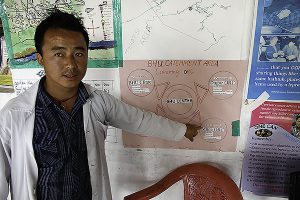 Medical office in a remote area
Medical office in a remote area
A medical office in a remote area with no permanent doctor. Because it functions as a family planning clinic and as a public health and hygiene clinic (working to combat HIV, etc.), it has many resources for helping people but generally they are in English.
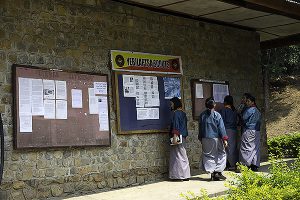 School
School
The notice board of a provincial town school. It appears that in everyday conversation, depending on the situation/context, English, Dzongkha, or another regional language is used, but it goes without saying that textbooks are in English, as is everything else from notifications inside the school to the school public address system.
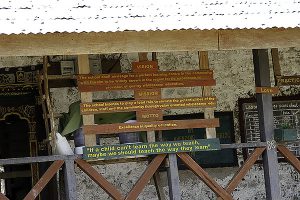 The school motto
The school motto
An elementary school in one of the most remote zones throughout the country: up until a few years ago when a new road was opened up, it had been a three-day walk to the nearest road. Even in this sort of location, everything down to the timetable and school motto are in English. The building, as can be partially seen on the hard left, is in the Bhutanese style.
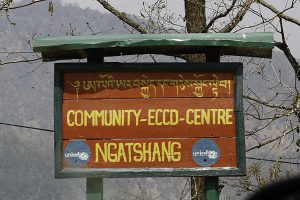 Early education
Early education
The signboard of an early education center. It is the general rule that signs like this are written in two languages. ECCD has recently been spreading in popularity very quickly and this is a facility for preschool education. They put special effort into early acquisition of English skills.
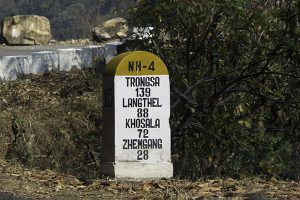 Road sign
Road sign
In recent years, dual language signs have come to be the norm, but until recently it was standard for road signs to be in English. This is also due to the fact that road construction and maintenance has been primarily conducted by India.
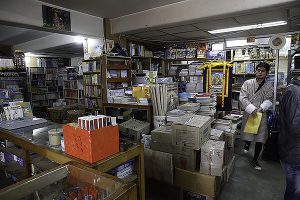 Bhutan’s oldest bookstore
Bhutan’s oldest bookstore
As one can tell from its name, “Pekhang (Bookstore),” this is the first bookstores established in Bhutan. At present there are five or six branches in the capital city of Thimphu, and there are several branches in towns on the border with India, but they all basically share the same style—with the majority of items for sale being reference works and novels in English, with a very small number of works in Dzongkha, mainly related to Buddhism, and stocking writing utensils.
 The interior of the KMT bookstore, the only bookstore that mainly deals in works in Dzongkha. The block-shaped paper bundles piled up in the center of the photograph are Buddhist sutras, and the store also deals in Buddhist pictures and items for use in religious ceremonies. The store also acts as a publisher for Dzongkha books and English translations of Dzongkha works. Among the materials on literacy education we received this time, too, there were some items that had been published through this bookstore.
The interior of the KMT bookstore, the only bookstore that mainly deals in works in Dzongkha. The block-shaped paper bundles piled up in the center of the photograph are Buddhist sutras, and the store also deals in Buddhist pictures and items for use in religious ceremonies. The store also acts as a publisher for Dzongkha books and English translations of Dzongkha works. Among the materials on literacy education we received this time, too, there were some items that had been published through this bookstore.
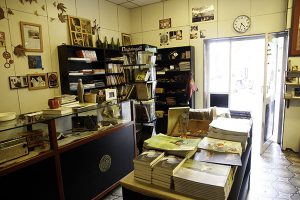 A recently established upscale bookstore. As can be seen in the photograph, they only deal in western-style books. Bhutan’s publishing culture is separated into the two worlds of (1) Buddhist culture, in Dzongkha (or Tibetan) and (2) modernization, in English. Because of this, in an everyday sense, the idea of “enjoying books for fun” is basically premised on the English language.
A recently established upscale bookstore. As can be seen in the photograph, they only deal in western-style books. Bhutan’s publishing culture is separated into the two worlds of (1) Buddhist culture, in Dzongkha (or Tibetan) and (2) modernization, in English. Because of this, in an everyday sense, the idea of “enjoying books for fun” is basically premised on the English language.
